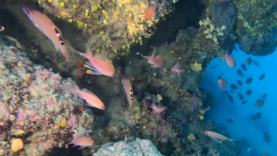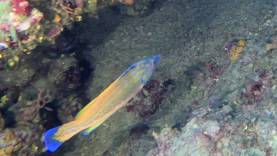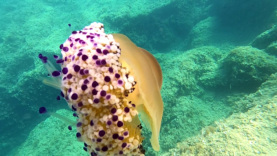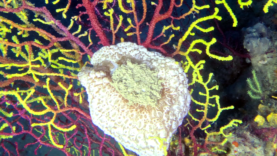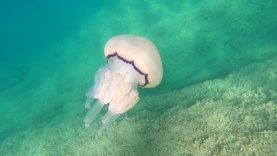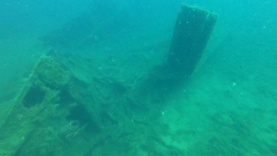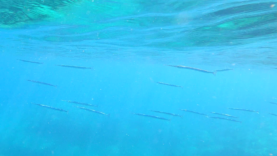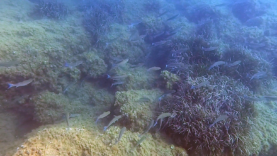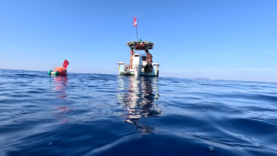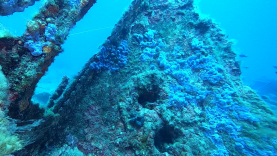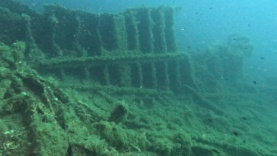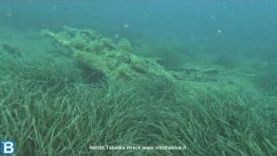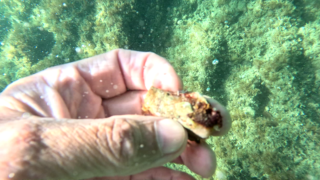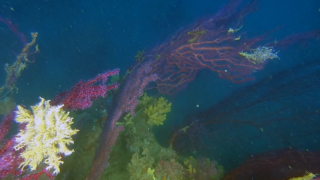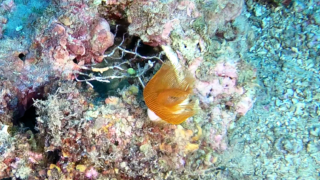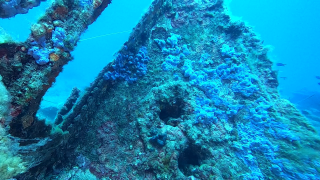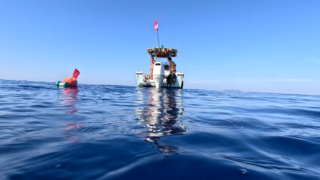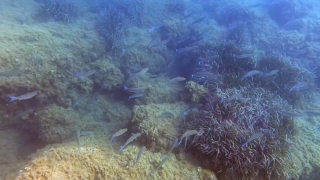Diving on Tabarka wreck
The history of the Italian motor ship Tabarka tells us how many of the wounds caused by the Second World War are unfortunately still open. The Tabarka was part of a convoy of seven ships that left Livorno and headed for Corsica, which headed south, south/west to get around some minefields present in the waters off Livorno and the Secche di Vada area. Diving on Tabarka wreck Immersione sul relitto del Tabarka Intotheblue.it

At 11.54pm on 30 November 1942, according to the testimonies of some survivors, while the convoy rounded the Vada lighthouse, just south of the shoals of the same name, the Tabarca suddenly turned to starboard – so reported the commander of Captain Sauro, who at the time of the disaster followed her in the formation and was immediately shocked by a sudden explosion in the bow, on the port side.
From aboard the Carini the explosion was heard and a high column of smoke was seen rising forward of the Tabarca, from whose smokestack large sparks came out; then the small motor ship was swallowed by the waters of the Ligurian Sea, taking with it around 230 young people, including soldiers and crew.
https://conlapelleappesaaunchiodo.blogspot.com/2019/10/tabarca.html
At this link you can find all the information and the reconstruction of the sinking probably caused by a mine left in the area after a demining operation conducted on November 29th, it was a systematic dredging operation conducted by the minesweepers of the III Flotilla sent by Maridipart La Spezia. Following this intervention, the waters south of the Vada shoals were considered free, and the navigation ban was lifted.
The saddest thing was not the sinking and the death of 230 people but what happened afterwards, i.e. over the years, that wreck was the subject of looting (more or less authorised), and then covered with gravel to prevent them from surfacing human remains. After the war – says Moreno Ceppatelli, an expert in naval history – the divers, commissioned by a company from Livorno, in turn authorized by the Navy, recovered the ferrous material from the ship, which was difficult to find in that period. To carry out the work, not much attention was paid to subtlety: explosives were used. This contributed to making it difficult to recover the bodies and identify them. Once the iron was recovered, what was left on the bottom was covered with sand and gravel.”

Like many divers in the area we also knew the history of the Tabarka and in many years we have never dived on the wreck trying to somehow respect the memory of these people. Last summer, however, we dived trying to film the wreck in the most respectful way possible with the awareness of leaving a filmed document that honored the memory of these young sailors.
The wreck is located on a seabed of approximately 25 meters of depth, i.e. mixed between rock, sand and posidonia, you can still clearly see the gravel with which it was covered and we leave you to watch the video of these two dives that we did in July 2023.
Gallery

